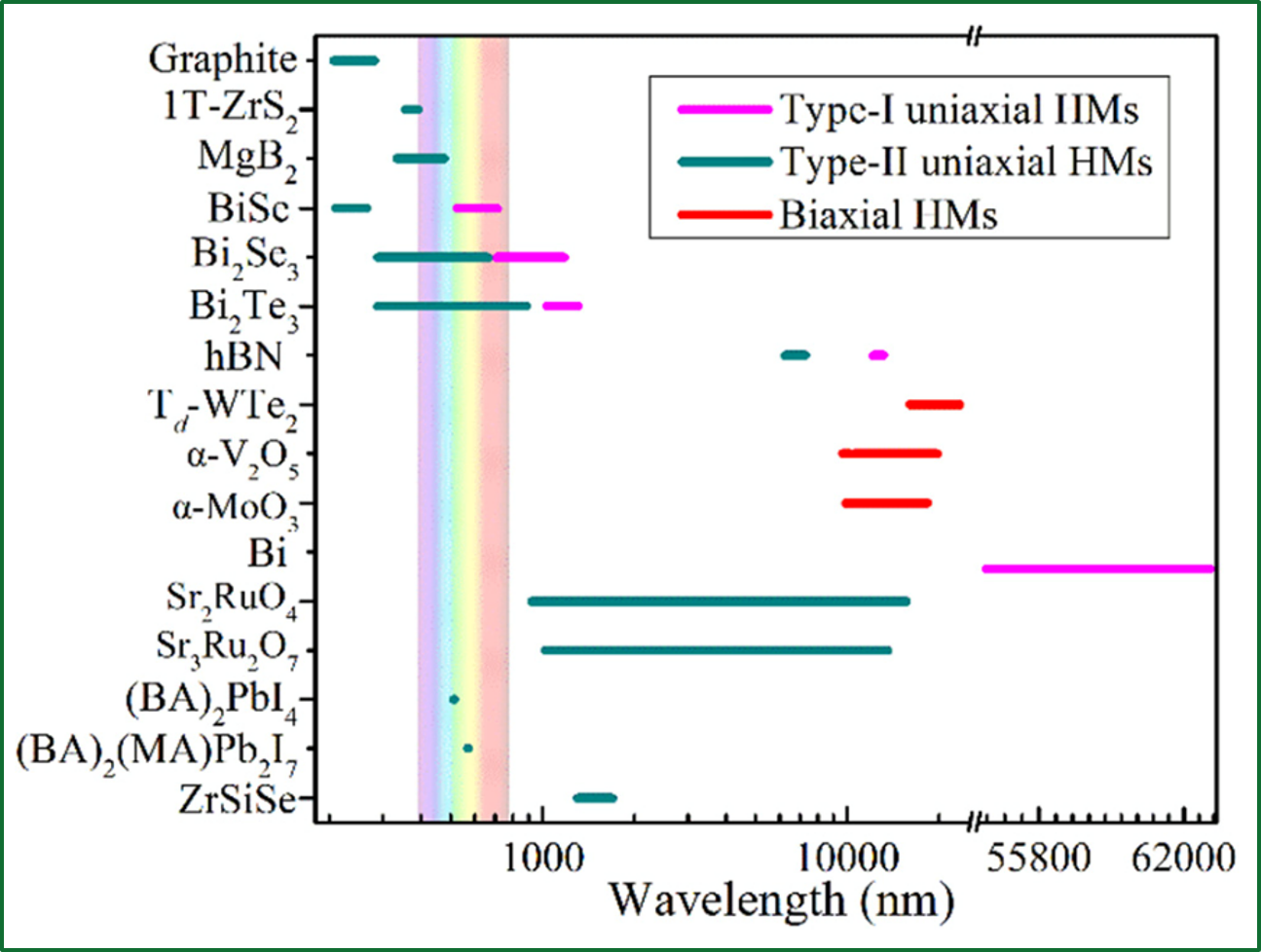A Meet FLEET innovation-and-industry event poster

Reza Asgari, FLEET Scientific Associate Investigator
The Challenge
Metamaterials are synthetic materials whose electromagnetic properties are determined not by their constituent atoms or molecules, but rather by the specific arrangement of these components, leveraging the assembly of subwavelength meta-atoms. They present several challenges including fabrication complexity, bandwidth limitations, issues with loss and absorption, scalability concerns, the pursuit of multi-functionality, sensitivity to environmental conditions, and considerations of commercial viability.
The Solution

Figure 1: Hyperbolic wavelength ranges of experimentally demonstrated natural hyperbolic vdW crystals. The iridescence bar indicates the visible-light regime.
Our solution comprises a method of using natural 2D materials as single-layer or multilayer vdW structures. This offers several solutions to the challenges faced by artificial metamaterials, including: simplicity in fabrication, broadband response, low-energy losses, large propagation wavelengths, environmental robustness, multi-functionality and commercial viability.
Key Benefits
- Super-resolution imaging
- Enhanced light–matter interactions
- Enhanced nonlinear optical effects
- Enhanced photovoltaics
- Valley quantum interference
- Photodetectors and solar cells
- Plasmonic applications, quantum optics and quantum information and Terahertz devices.
Development Stage
- Theoretical concept completed
- Seeking strategic technology and partners
Brief Description & Differentiation

Figure 2: Hyperbolic regimes of WTe2 illustrated by the coloured bars. The hyperbolic regimes can be effectively tuned by charge, doping and strain.
In 2D natural hyperbolic materials the dielectric response differs along the two orthogonal axes, resulting in hyperbolic dispersion relations. The hyperbolic dispersion relations are characterized by anisotropic behavior, where one axis supports propagating waves (like a dielectric) while the other axis supports evanescent waves (like a metal).
These materials can support hyperbolic modes or surface polaritons, which are electromagnetic waves that propagate along the material’s surface. 2D materials with their unique electronic structure and optical properties enable them to exhibit hyperbolic dispersion in certain frequency regimes, as seen in Figure 1 (left).
The response to electromagnetic fields depend on the charge, doping and strain as shown in Figure 2 (right) above.
The unique properties of 2D hyperbolic materials enable the realization of the hyperbolic regime within a single sheet, eliminating the need for intricate substrate patterning. Research has indicated that 2D hyperbolic materials possess the capability to sustain highly directional hyperbolic surface plasmons.
The properties of natural hyperbolic materials make them highly desirable for applications in optoelectronics, nanophotonics and plasmonics, thermal manganate, quantum technology, sensing and biosensing, metamaterials, and energy conversion. They offer opportunities for developing advanced devices and systems with unique functionalities based on their hyperbolic dispersion characteristics.
Intellectual Property
No patent
Key Publications
- G. Jia, et al, Two-dimensional natural hyperbolic materials: from polaritons modulation to applications, Nanoscale 14, 17096 (2022)
- Z. Torbatian, et al, Tunable low-loss hyperbolic plasmon polaritons in a TdWTe2 single layer, Phys. Rev. Appl. 14, 044014 (2020)
- Z. Torbatian, et al, Hyperbolic plasmon modes in tilted Dirac cone phases of borophene, Phys. Rev. B 104, 075432 (2021)
- A. Ebrahimian and Asgari, R., Natural hyperbolicity in layered hexagonal crystal structures, Phys. Rev. B 103, 035425 (2021)
More information
- Contact Dr Reza Asgari FLEET Associate Investigator reza4asgari8@gmail.com

